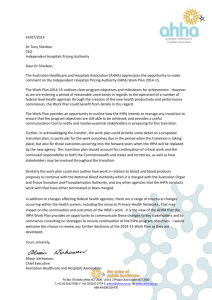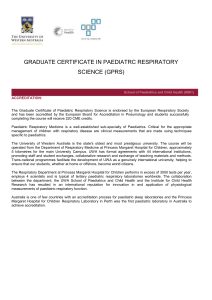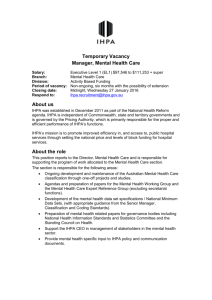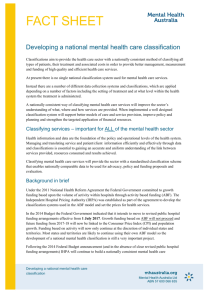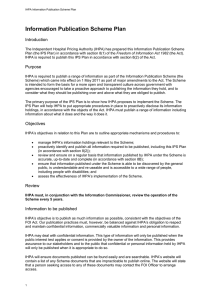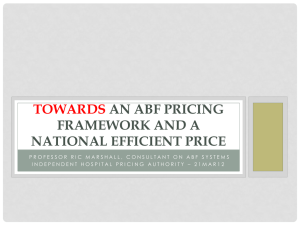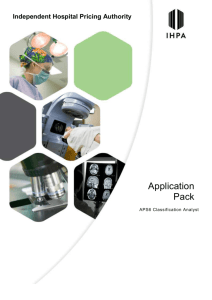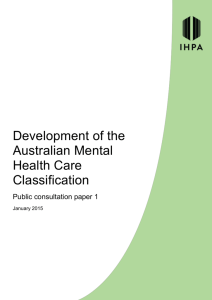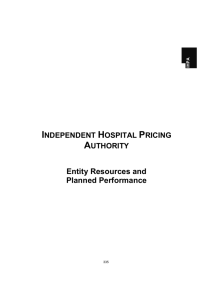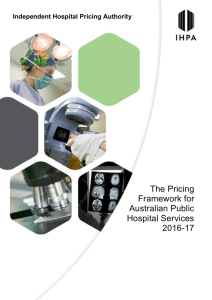25 May 2010 - Department of Health
advertisement
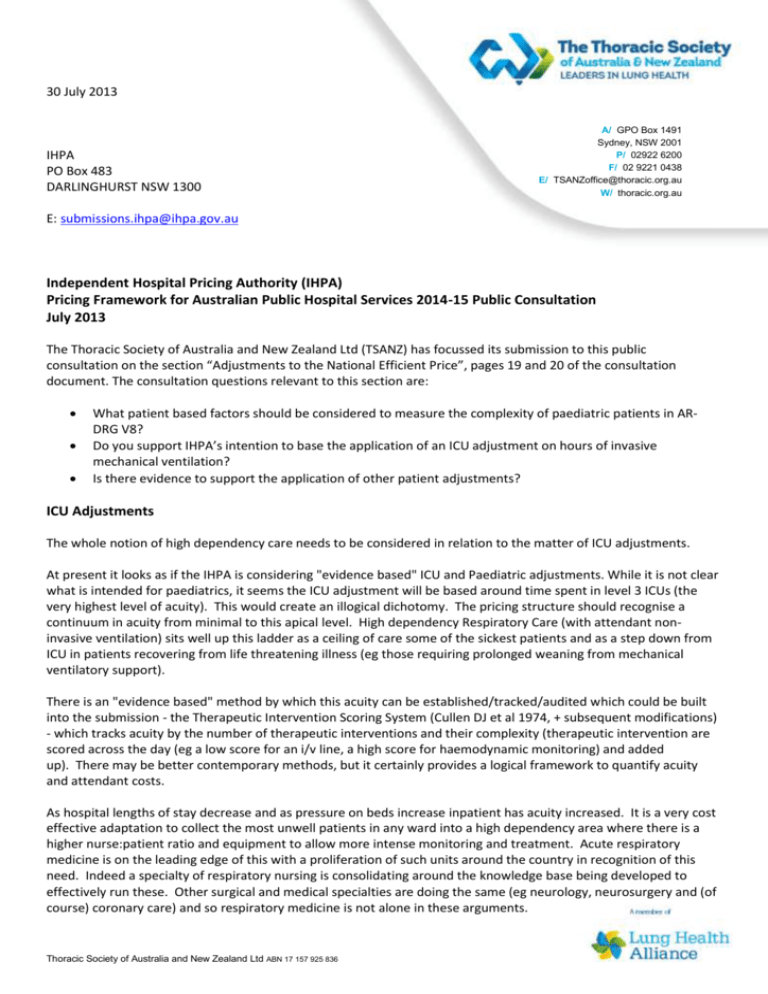
30 July 2013 IHPA PO Box 483 DARLINGHURST NSW 1300 A/ GPO Box 1491 Sydney, NSW 2001 P/ 02922 6200 F/ 02 9221 0438 E/ TSANZoffice@thoracic.org.au W/ thoracic.org.au E: submissions.ihpa@ihpa.gov.au Independent Hospital Pricing Authority (IHPA) Pricing Framework for Australian Public Hospital Services 2014-15 Public Consultation July 2013 The Thoracic Society of Australia and New Zealand Ltd (TSANZ) has focussed its submission to this public consultation on the section “Adjustments to the National Efficient Price”, pages 19 and 20 of the consultation document. The consultation questions relevant to this section are: What patient based factors should be considered to measure the complexity of paediatric patients in ARDRG V8? Do you support IHPA’s intention to base the application of an ICU adjustment on hours of invasive mechanical ventilation? Is there evidence to support the application of other patient adjustments? ICU Adjustments The whole notion of high dependency care needs to be considered in relation to the matter of ICU adjustments. At present it looks as if the IHPA is considering "evidence based" ICU and Paediatric adjustments. While it is not clear what is intended for paediatrics, it seems the ICU adjustment will be based around time spent in level 3 ICUs (the very highest level of acuity). This would create an illogical dichotomy. The pricing structure should recognise a continuum in acuity from minimal to this apical level. High dependency Respiratory Care (with attendant noninvasive ventilation) sits well up this ladder as a ceiling of care some of the sickest patients and as a step down from ICU in patients recovering from life threatening illness (eg those requiring prolonged weaning from mechanical ventilatory support). There is an "evidence based" method by which this acuity can be established/tracked/audited which could be built into the submission - the Therapeutic Intervention Scoring System (Cullen DJ et al 1974, + subsequent modifications) - which tracks acuity by the number of therapeutic interventions and their complexity (therapeutic intervention are scored across the day (eg a low score for an i/v line, a high score for haemodynamic monitoring) and added up). There may be better contemporary methods, but it certainly provides a logical framework to quantify acuity and attendant costs. As hospital lengths of stay decrease and as pressure on beds increase inpatient has acuity increased. It is a very cost effective adaptation to collect the most unwell patients in any ward into a high dependency area where there is a higher nurse:patient ratio and equipment to allow more intense monitoring and treatment. Acute respiratory medicine is on the leading edge of this with a proliferation of such units around the country in recognition of this need. Indeed a specialty of respiratory nursing is consolidating around the knowledge base being developed to effectively run these. Other surgical and medical specialties are doing the same (eg neurology, neurosurgery and (of course) coronary care) and so respiratory medicine is not alone in these arguments. Thoracic Society of Australia and New Zealand Ltd ABN 17 157 925 836 Paediatric Services Paediatric services also need to be considered during this consultation. Tests and procedures generally take longer to perform and/or require more resources than in adults. For example, "simple" Spirometry test in a young child will often take 30 minutes to do whereas an otherwise fit adult can do this in substantially less time. Similarly other respiratory function tests such as lung volume measurements and exercise tests generally take longer in children than in adults. It is significantly more time consuming for the scientific officer to explain the test not just to the child but to the parents and to then perform the tests on the child than to perform testing on an able-bodied adult patient. The problem arises with how to cost this: consideration needs to go into the time taken to perform the test to reflect the additional care required in paediatrics. A sleep study is a further example of a procedure that requires additional staff in paediatric practice: there is a practical inability to do these using the low cost adult community models. Other clinical scenarios affect paediatrics differently to adult practice. For example bronchoscopy is always performed under full general anaesthesia in paediatrics, whereas it is commonly performed under local anesthesia + sedation in adults. Costing needs to reflect the added resources required to perform procedures such as bronchoscopy in children compared to adults. For these reasons we believe there needs to be adjustments made to the cost value for procedures in children. We trust you will consider these issues in considering the development of the Pricing Framework. If you require any further clarification or information, please contact the TSANZ CEO, Rita Perkons, on rita.perkons@thoracic.org.au. Yours Sincerely Rita Perkons Chief Executive Officer Hiran Selvadurai Chair, TSANZ Professional Standards Sub-Committee David Hillman Clinical Professor Head, Department of Pulmonary Physiology and Sleep Medicine Sir Charles Gairdner Hospital
